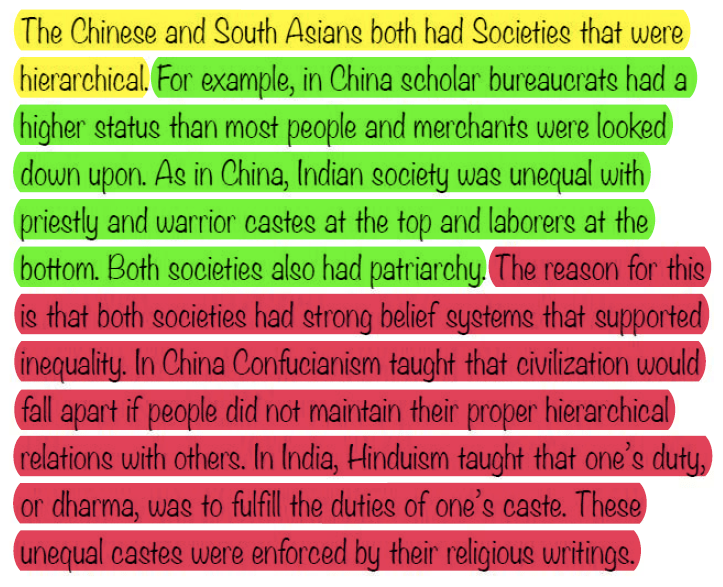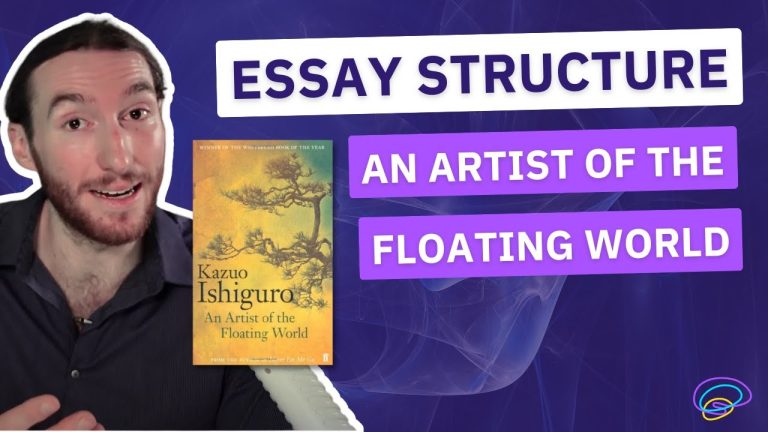An Artist Of The Floating World Essay
An Artist of the Floating World is a novel written by Kazuo Ishiguro. The story is set in post-war Japan and follows the life of Masuji Ono, an aging artist who looks back on his life with regret. The novel is a meditation on memory, mortality, and the power of art to shape our lives. Through Masuji’s story, Ishiguro explores themes of guilt, responsibility, and redemption. By examining the various ways that Masuji has responded to the challenges of his life, Ishiguro encourages readers to reflect on their own choices and how they have shaped their lives. An Artist of the Floating World is a powerful read that will linger with readers long after it is finished.
Overview of the Novel
An Artist of the Floating World by Nobel Prize-winning author Kazuo Ishiguro is a powerful and moving tale of a painter, Masuji Ono, who is struggling to come to terms with his past and present in the aftermath of Japan’s defeat in World War II. Through Ono’s story, Ishiguro explores the complexities of memory, guilt, and reconciliation. The novel is set in post-war Japan, a country struggling to find its new identity in the wake of a great upheaval. As Ono attempts to reconcile his past actions and his present reality, he finds himself in a state of limbo, neither able to move forward nor go back. Through the journey of Ono’s life, Ishiguro paints a vivid and heartbreaking portrait of a man who has been forced to come to terms with a new world in which he is no longer the master of his fate. The novel is an engaging and heartbreaking exploration of one man’s inner turmoil, and a powerful meditation on the human capacity for resilience and understanding.
Character Analysis of Masuji Ono
Masuji Ono is a complex and sophisticated character from the novel An Artist of the Floating World, written by Nobel Prize-winning author Kazuo Ishiguro. Ono is a retired painter who has become a symbolic figure of Japan’s post-WWII modern era. Ono is a flawed character who has difficulty coming to terms with his past and the choices he made during the war. He is a man of both honor and dishonor, as he struggles to reconcile his image and his actions with a newfound sense of morality. Ono is a complicated man who is both knowledgeable and wise, yet deeply flawed.
Ono is a proud man who is deeply rooted in Japanese culture and tradition. He is an artist who values beauty, aesthetics, and art above all else. His art, however, is often criticized by those around him because of its subject matter. Ono is a man who is constantly searching for a sense of belonging and acceptance, yet he often finds himself in a place of loneliness and isolation.
Ono has a strong moral code which he follows even when it does not benefit him. He is a man of integrity who is willing to take responsibility for his actions. Despite his flaws, Ono is an admirable character who is capable of inspiring hope in others.
Ultimately, Ono is a complex character who is both proud and flawed. He is an artist of the floating world who is struggling to reconcile his past with his present. He is a man of honor and principles who is searching for a sense of acceptance in a world that is constantly changing.
Setting and Symbolism in ‘An Artist of the Floating World’
Kazuo Ishiguro’s novel ‘An Artist of the Floating World’ presents readers with a captivating story of a Japanese artist, Masuji Ono, living with his memories of the past in post-war Japan. Throughout the novel, Ishiguro uses setting and symbolism to explore the themes of memory, guilt, and the consequences of one’s actions.
The novel is set in Nagasaki, Japan, two years after the end of World War II. The physical and emotional damage of the war is still being felt by the citizens of Nagasaki. The city has been destroyed, and the Japanese people are struggling to rebuild their lives. This setting gives readers an insight into the psychological effects of war on the citizens of Nagasaki.
Symbolism is also used throughout the novel to further explore the themes of memory and guilt. The most prominent symbol is the garden, which serves as a metaphor for Masuji’s memories. The garden is a place of beauty and peace, but it is also a reminder of the past. It is a place where Masuji can reflect on his past actions and confront his guilt.
Furthermore, Ishiguro uses the idea of the floating world to explore the themes of memory, guilt, and the consequences of one’s actions. The floating world is a Japanese concept that refers to a transient, ever-changing reality. It symbolizes the idea that, while one can never go back in time to change the past, one can still make different choices in the present.
Overall, Ishiguro uses setting and symbolism to explore the themes of memory, guilt, and the consequences of one’s actions in ‘An Artist of the Floating World’. Through this exploration, he offers an insightful and thought-provoking look at the human experience.

Social and Cultural Context of Post-War Japan
The impact of World War II on Japan was immense, and the period that followed was a time of immense change and upheaval. The phrase ‘An Artist of the Floating World’ was coined to reflect the sense of uncertainty and flux that characterized this period in Japanese history. In this essay, we explore the social and cultural context of post-war Japan and its influence on the works of art that emerged during this time.
The cultural landscape of post-war Japan was shaped by the nation’s recovery from the devastation of the war. Economic hardship and political instability were the norm, and the nation’s priorities were focused on rebuilding and repatriation. This period was marked by a sense of resilience and determination, and many works of art reflected this in their themes of unity and hope.
The works of art produced in this period also spoke to the pain and suffering of the post-war period. Many depicted scenes of poverty and deprivation, as well as the losses of loved ones and homes that had been destroyed. This is what the phrase ‘An Artist of the Floating World’ has come to represent: the pain and sorrow of a nation struggling to rebuild in the wake of war.
The works of art created during this period have gone on to become some of the most iconic images of Japanese culture. They are a testament to the resilience of the Japanese people and their ability to overcome adversity. An Artist of the Floating World is a tribute to the courage and determination of a nation in the face of tragedy.
Themes of Guilt and Redemption in the Novel
An Artist of the Floating World
In the novel An Artist of the Floating World, author Kazuo Ishiguro presents a story of sorrow and guilt, and the possibility of redemption. Through the main protagonist, Masuji Ono, the novel examines the consequences of Japan’s involvement in World War II, and the effects it had on the country’s citizens and culture. The novel is set in post-war Japan, a time of great change and uncertainty. Ono, a former painter and art teacher, is forced to confront his past and the choices he made during the war. Throughout the narrative, Ishiguro explores themes of guilt, regret, and redemption, as Ono comes to terms with his own actions and those of his country.
The novel follows Ono as he struggles to reconcile his past with his present. Ono is a man who is consumed with guilt and regret, and Ishiguro uses Ono’s story to explore the notion of redemption. Despite his guilt, Ono is able to find a sense of peace and acceptance by the end of the novel. Ishiguro’s novel also uses symbols to explore themes of guilt and redemption. Ono’s paintings, which he uses to confront his past, are a symbol of his guilt and regret. In addition, Ishiguro uses the symbolism of the sea and the floating world to represent the idea of redemption. By the end of the novel, Ono is able to move on from his past and find a sense of peace and acceptance.
An Artist of the Floating World is a powerful and moving novel that uses themes of guilt and redemption to explore the effects of World War II on Japan and its citizens. By examining Ono’s journey to redemption, Ishiguro offers an insightful look at a nation in transition.
Legacy of ‘An Artist of the Floating World’
Kazuo Ishiguro’s novel ‘An Artist of the Floating World’ is an emotionally charged and deeply moving story of the war-torn years of the post-WWII era. Set in a Japanese city, Ishiguro uses his characters to explore themes of memory, guilt, and identity. The novel follows the protagonist Masuji Ono, a retired painter, who reflects on his life and his role in Japan’s war efforts. Through Ono’s story, Ishiguro forces readers to consider the consequences of war and the choices made during times of conflict.
The book is a powerful reminder of how the actions of individuals can have far-reaching consequences. It is also a testament to the resilience of the human spirit as Ono struggles to make peace with his past and find a way to move forward. Ishiguro’s powerful writing and vivid descriptions draw readers into the story and give them a glimpse into the struggles of post-WWII Japan. ‘An Artist of the Floating World’ is an important work that highlights the impact of war and the importance of understanding one’s past.
FAQs About the An Artist Of The Floating World Essay
Q. What is the main theme of An Artist Of The Floating World?
A. The main theme of An Artist Of The Floating World is the process of cultural change and adaptation in post-war Japan, with the protagonist Masuji Ono struggling to come to terms with the new societal order.
Q. How does An Artist Of The Floating World explore generational differences?
A. An Artist Of The Floating World explores generational differences through the character of Masuji Ono, a man who is struggling to reconcile his traditional values with the newer values of his children and grandchildren.
Q. How does An Artist Of The Floating World portray the struggles of adapting to a new culture?
A. An Artist Of The Floating World portrays the struggles of adapting to a new culture through the character of Masuji Ono, who is forced to re-evaluate his values and beliefs in order to make sense of the new world order.
Conclusion
The Artist of the Floating World is an important work of literature that showcases how a culture can be both beautiful and destructive. It shows us the dichotomy of Japanese culture and the consequences of war. Through the protagonist Masuji Ono, we are able to witness the effects of the war on a personal level and the power of redemption through art. The novel is ultimately a story of change and growth, and it reminds us that we have the power to shape our own destinies.



